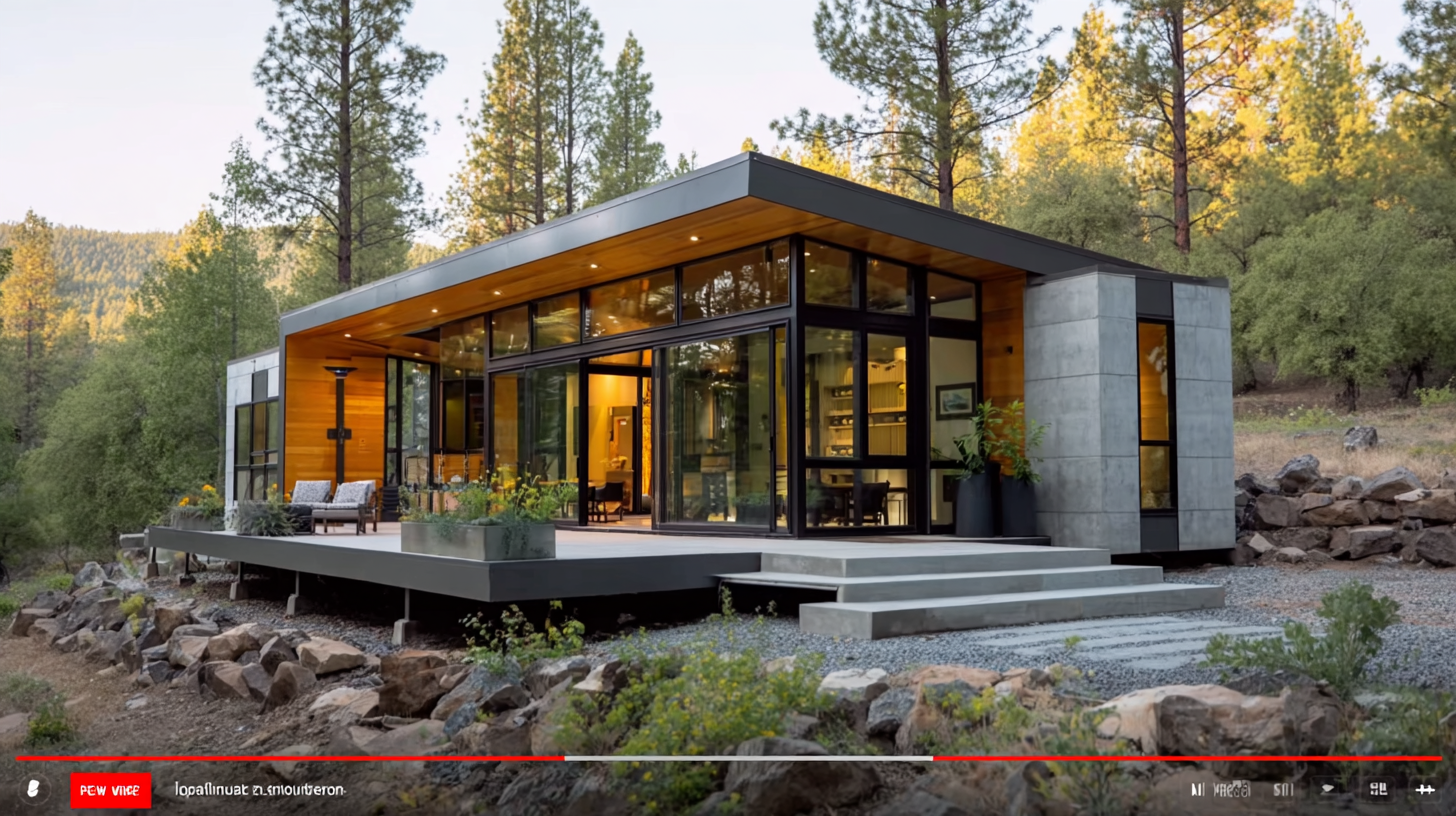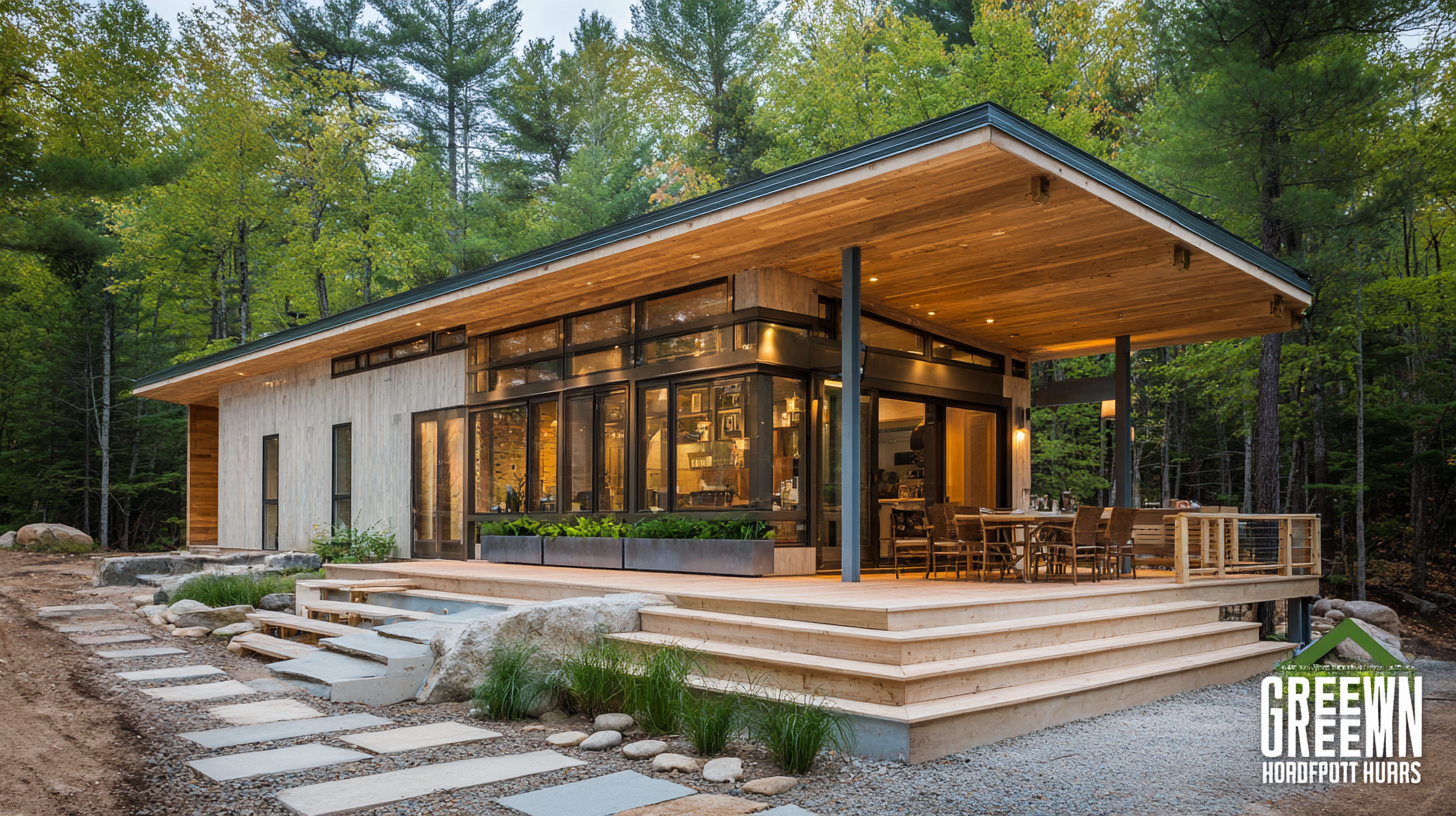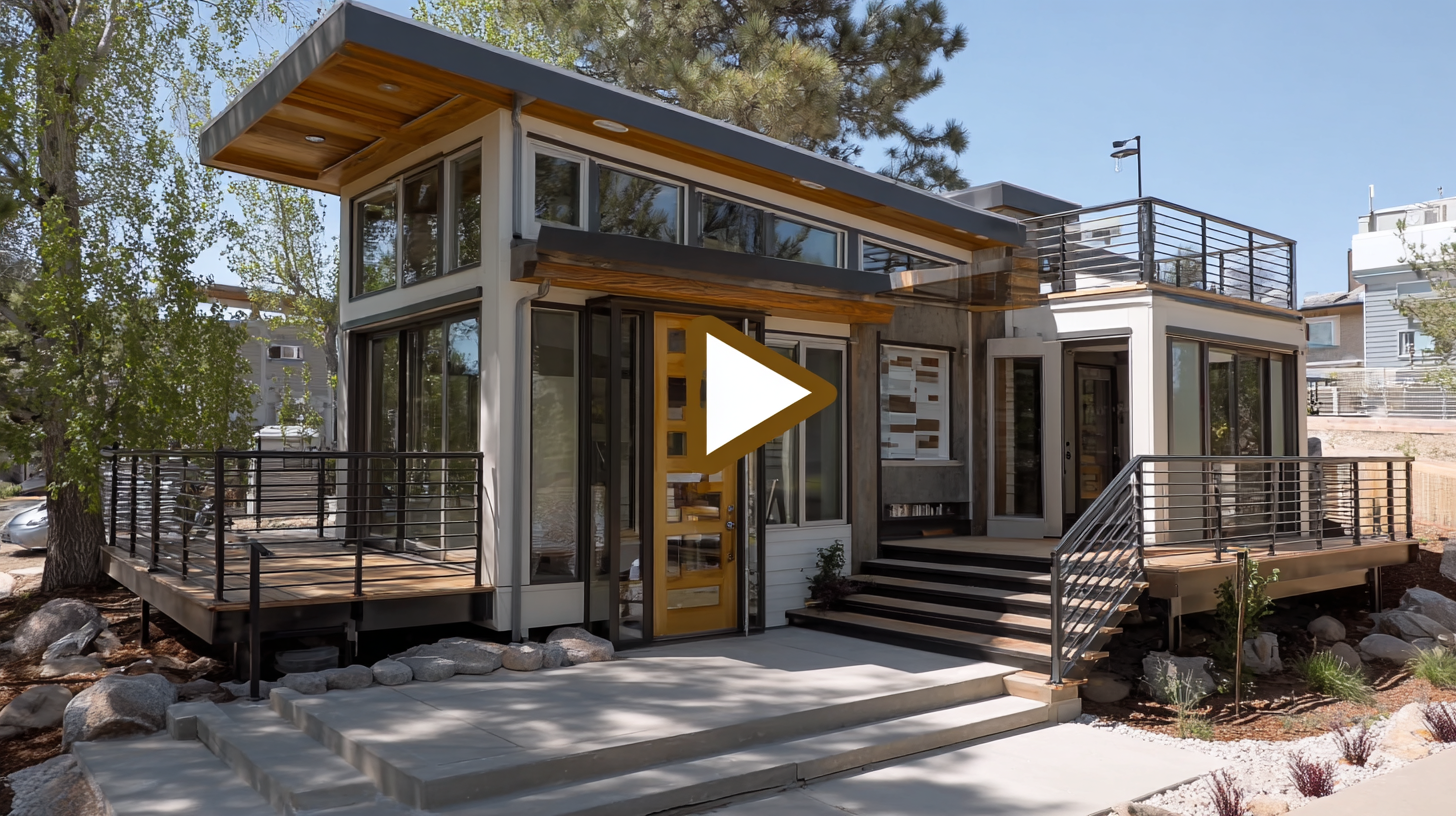In recent years, the popularity of Off Grid Prefab Homes has surged, driven by a growing demand for sustainable living solutions and a self-sufficient lifestyle. According to a report by Fortune Business Insights, the global prefab housing market is projected to reach $210.49 billion by 2028, with an increasing segment focusing on off-grid solutions. This shift is largely attributed to advancements in construction technologies and the rising emphasis on eco-friendly materials, particularly in China, which has emerged as a powerhouse of manufacturing. "中国智造,全球热销,品质保证" underscores the advantage of Chinese manufacturers in producing high-quality off-grid prefab homes that cater to both local and global markets.

As individuals and families seek alternatives to traditional housing, understanding how to identify reputable manufacturers is crucial for ensuring quality and reliability in this evolving industry. In this blog, we will explore insights and strategies for selecting the best manufacturers to meet the growing demand for Off Grid Prefab Homes.
When exploring the realm of off-grid prefab homes, understanding the key features that define high-quality structures is essential for making an informed decision. One of the primary characteristics of these homes is their energy efficiency. Look for manufacturers that incorporate advanced insulation materials and energy-efficient windows to minimize heat loss, ensuring comfort while reducing energy consumption. Moreover, features like solar panels, rainwater harvesting systems, and composting toilets exemplify a commitment to sustainability and self-sufficiency, crucial for life off the grid.
Another important aspect to consider is the quality of materials used in construction. High-quality prefab homes often utilize durable, eco-friendly materials that withstand the elements and stand the test of time. Look for certifications that indicate the use of sustainable wood, recycled materials, and low VOC (volatile organic compounds) finishes. Additionally, attention to detail in craftsmanship, such as proper sealing and weatherproofing, can significantly enhance a home’s longevity and performance. By focusing on these features, potential buyers can navigate the landscape of prefab homes effectively and identify the best options that align with their off-grid living goals.
This chart illustrates the importance levels of key features that characterize high-quality off-grid prefab homes. Each feature is rated on a scale from 1 to 10, highlighting energy efficiency, sustainability, and durability as critical aspects for potential buyers.
When looking to invest in off-grid prefab homes, identifying high-quality manufacturers is crucial. The industry is filled with options, but not all manufacturers offer the same level of quality and reliability. Essential industry insights can guide you in making informed decisions.
Tip: Research the manufacturer's track record by examining customer reviews and case studies. Look for feedback on construction quality, customer service, and post-purchase support. A manufacturer with consistently positive reviews will likely deliver a better product and experience.
Additionally, consider the materials used in the prefab homes. High-quality manufacturers often prioritize eco-friendly and durable materials that contribute to energy efficiency and sustainability. Ask about the sourcing of these materials and whether they comply with industry standards.
Tip: Visit the manufacturing facility or request detailed production processes from potential manufacturers. Understanding how homes are built and the craftsmanship involved can significantly influence your decision. This transparency indicates a manufacturer’s confidence in their product and commitment to quality.
When searching for high-quality manufacturers of off-grid prefab homes, it’s essential to look at those with a proven track record. Some of the top examples of reliable manufacturers include companies like EcoCabins, known for their sustainable building practices, and Handcrafted Movement, which emphasizes creative design and energy efficiency. These companies not only prioritize eco-friendly materials but also ensure that their homes are built to withstand various environmental challenges.
One of the tips when evaluating manufacturers is to check for certifications and reviews. Look for certifications from recognized industry bodies that indicate quality assurance in their building processes. Additionally, reading customer reviews and seeking testimonials can provide insight into the manufacturer’s reputation and reliability.
Another important tip is to assess their design flexibility. High-quality manufacturers should offer customizable options to suit your specific needs and preferences. This adaptability is crucial in creating a home that not only fits your lifestyle but also blends seamlessly with the natural surroundings, adding to the overall appeal of off-grid living.
| Manufacturer Location | Years of Experience | Sustainability Practices | Customer Reviews | Price Range ($) |
|---|---|---|---|---|
| USA | 15 | Net-zero energy | 4.8/5 | 50,000 - 150,000 |
| Canada | 10 | Recycled materials | 4.5/5 | 60,000 - 120,000 |
| Australia | 20 | Off-grid living | 4.9/5 | 70,000 - 180,000 |
| Germany | 12 | Passive house standard | 4.7/5 | 80,000 - 200,000 |
When searching for high-quality manufacturers for off-grid prefab homes, assessing their sustainability practices is paramount. According to a 2022 report by the Sustainable Building Alliance, over 70% of consumers now prioritize eco-friendly features in their housing choices, indicating a significant market demand for sustainable construction solutions. Evaluating manufacturers' adherence to sustainability certifications, such as LEED (Leadership in Energy and Environmental Design) or ISO 14001 for environmental management, can shed light on their commitment to environmentally responsible practices.
Additionally, examining the lifecycle analysis of materials used in prefab homes is crucial. The World Green Building Council reports that buildings are responsible for 39% of global carbon emissions, with the construction phase being a major contributor. Manufacturers that utilize recycled materials and implement energy-efficient production processes tend to showcase lower carbon footprints. By prioritizing manufacturers that transparently share their sustainability statistics, potential buyers can make informed decisions that align with their values and contribute to a greener future.

When searching for high-quality manufacturers of off-grid prefab homes, utilizing the right resources for research is crucial. Start by exploring industry directories and online platforms dedicated to sustainable living and prefab construction. Websites like the Sustainable Living Association or Green Building Council provide insightful lists of manufacturers that align with eco-friendly practices. These platforms often include reviews and testimonials from previous customers, allowing you to gauge the reputation of potential manufacturers.

In addition to directories, attending industry trade shows and expos can be an excellent way to gather firsthand information. These events not only showcase various manufacturers and their offerings but also facilitate networking opportunities with industry experts. Engaging with these professionals can provide deeper insights into the manufacturing process and the specific technologies used in off-grid homes. Another valuable resource is social media groups focused on off-grid living, where enthusiasts share their experiences and recommendations, helping you make informed decisions on the best manufacturers to consider.
